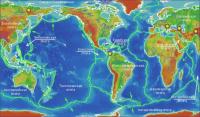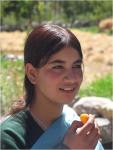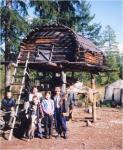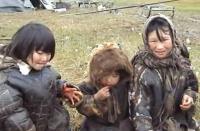Longevity is a unique phenomenon and characterized not only with lifetime, but with long preservation of health, ability to reproduce a healthy generation, high activity and immunity – ability to cope with severe diseases by oneself. Life conditions of a present western man are constant taking of medicines, obligatory vaccination, regular medical examinations. Besides according to the present statics, there is a “sham longevity”, it means, that every third family has an elderly relative, who can not care about himself on his own, a paralyzed or disabled person, being out of his mind, who needs constant attention, to take medicines or to be served with expensive medical equipment and etc. Unfortunately, many modern methods of prolongation of life do not make it better, that is evidence in every age group from the birth.
Of course, there are separate individuals within any nationality, who differ from others by a long life, but a special interest is not separate persons, but populations. According to western opinions health of a population is divided into groups, every of which gets registered to the certain lifetime, and every group is characterized with the definite period of progress.
1. Primitive, 20-22 years (hunters, gatherers, fishers, conditions of “appropriating economy”);
2. Post-primitive, 20-30 years (agrarian economy);
3. Quasimodern, 60-68 years, (industrial-agrarian period);
4. Modern, 75-80 years (countries, entering into the period of computer-industrial civilization);
5. Postmodern, 82-85 years.
But there are strong reasons to consider it to be wrong.
On the Earth few nationalities can boast a big number of long-livers. Nationalities, which average lifetime is 120-140 years, is close by us! Years surprise, moreover in contrast to the notions in the modern “developed” world about connection of health and longevity with life conditions (climate, level of economy, level of medicine and etc.), we reveal long-livers in the nationalities, which live in the most "unfavourable” conditions in terms of western ones. A paradox is that peoples-long-livers refute this theory by their existence. We attempt to look into the secret of their healthy and happy life.
We examine some groups of long-livers:
Nationality of Hunza in Pakistan, some nationalities in mountain Dagestan and Abkhazia, some separate peoples in Yakutia and Japan, people, living in the place Vilcambaba to the south of Ecuador or in a small village in Hungary, habitants of the province Villa Clara in Cuba, that is the basic places of habitation of these happy people. Geographic distribution of such people is various a lot (Fig. 1). The basic point uniting all these nationalities is a severe climate, abstemious diet, heavy physical activity, often – absolutely absence of modern medicine, and creature comforts in general.
The most mysterious one is the people of Hunza – it is only 15 000 people. The valley of the Hunza river (border between India and Pakistan), is called “oasis of youth” (Fig. 2).
People of the Hunza bathe in icy water even, when it is 15 degrees of frost, play in active games till they are hundred years old, move easily in the way of running in the mountains, 40-year-old women look like girls, and they born children at the age of 65. In summer they eat raw fruits and vegetables, dried fatless meat and drink very few milk, in winter they eat apricots dried in the sun and sprouted seeds, sheep cheese. One more fact is also interesting: habitants of the happy valley have a period, when fruits have not ripened yet – such a period is called “a hungry spring” and lasts from two till four months. In these months they almost do not eat anything and only one time a day they get a drink from dried apricots. The country, where this nationality lives, is distinguished with lack of water, it rains seldom, just during three or four winter months, when temperature falls to zero and even below. But there is little snow in that area, so water is worth its weight in gold. There are no forests, soil is not fertile. In winter people of the Hunza sleep in caves – stone homes, where there are no windows (only one opening instead of a door), they sleep on stone benches. A cattle is placed in the entrance. It is naturally, that they do not have firewood for heating. Fire in hearths is kept with dry branches and leaves. On such a fire they cook, but wash and clean clothes in cold water only. The people of Hunza manage without baths and saunas, without hot water and soap. This nationality has no written language, they do not listen to the radio, watch no TV, they are never upset - it is their single religion. There is some more paradox, it is considered as an axiom, that a marriage between closer relatives is unhealthy in physical and mental aspect. Representatives of this folk espouse only with the members of their small nation. Foreign blood does not run in their veins.
Yakuts. Yakutia or the Sakha Republic is situated in the northeastern Siberia. Among long-livers there are the habitants of Yakutia, who in spite of civilization come closer to them, have not begun to live according to the new rules, they have saved their life style and their customs (Fig. 3, 4). Average lifetime is 133 years. Basic provision is fish and venison. Products for food do not go through heat treatment, it helps to keep natural biological features and ability to self-digestion in them. Conditioning to the cold begins from tender years, sometimes parents put their undressed baby on snow for a short while. The basic way to move for Yakuts as well as for some other nationalities-long-livers is running!
Caucasian nations. It is one of the famous regions of long-livers. There is something behind that scientists of different countries were interested just in Abkhazian people, peculiarities of its culture, way of life, customs and traditions. So the first Soviet-American gerontological research in the territory of the former USSR was carried out in the Gudauta and Ochamchira dostricts of Abkhazia, long ago inhabitants of which attracted attention of scientists with their longevity. The fact, that longevity has been always a feature of existence of Abkhazian people, is confirmed in Abkhazian folk fairy-tales. In general Caucasian tales narrated, that before people lived some hundred years. According to the census of the population in 1950 in mountainous Dagestan, for example it was registered 64 long-livers (of 100 years old and more), that was half as much as a total number of such people in Belgium, Germany, Holland, Denmark, Italy, Norway, Finland, Czechoslovakia and Sweden together. Mountainous region in Dagestan is in the first place concerning a number of long-livers. Though a number of women-long-livers exceeds a number of men twice as much.
Vilcabamba to the south of Ecuador. A high-mountain place Vilcabamba became famous worldwide due to its long-livers. For the first time the world knew about marvelous “Valley of miracles” in 1971, when a French magazine “Paris Match” published known only for local medics data, provided them with 17 pictures of the oldest long-livers. And this area and high-mountain Vilcabamba at a height of 1500 metres above the sea level were taken into account first of all due to the results of the census of the population, which indicated, that there was a rather high interest of long-livers at the age of 100-130.
Cuba. Cuban researchers “revealed” secrets of longevity in the center province Villa Clara, where more than 100 citizens was counted, the age of whom was past over a century. They asserted, that their parents also lived for long time, working actively in agriculture. Nowadays on the island it is counted almost 46 thousand “candidates” in long-livers, the age of whom is 90-99 years. Some years ago in Cube it was established “Club of 120 aged”, a member of which could be not only long-livers but any human as well, who would live more than 100 years. The main condition for joining is a healthy life style. Its members do not smoke, keep a diet, do physical exercises and take an active in cultural events.
A human can reach the age of 120 and more. There are scientific proves. There is no doubt that aggressive anthropogenic and ecological environment of our time reduces our biological resources. Plenty of commerce of medicines, which treat every disease, does not contribute to longevity. According to statistics 20 % of deaths occur because of a wrong treatment and side effect of medicines.
Long-livers are the evidence of a healthy, to be more exactly natural life style for an ordinary human. Usage of natural products, refusal from smoking and alcohol increase a period of life. Psychologic resistance can be considered as one of the base factor of longevity.
It is absolutely right to consider, that longevity is not a phenomenon, but the consequence of a harmony of a person with natural environment, so-called biological comfort. Is there any general factor, influencing on life indices of these groups of long-livers?
Examining these groups we come to such an amazing fact: neither peculiarities of locality (mountains, lowlands) nor general in a diet and national (genetic) features are common for these groups. The Extreme North, Cuba, Tibet or Japanese are quite different concerning conditions for life.
But however there is something general! European scientists would refer them to the first type of population health – primitive one with life time only of 20-22 years. The one thing is right, that they are really attributed to the “primitive” society, i.e. a society with appropriating economy: hunters, fishers and gatherers, if there is cattle breeding only provided non-scale character, it is close to natural conditions. None of nations with long-livers is referred to wandering tribes or conquerors, broadening their geography in the process of civilization development. Long-livers practically do not travel and not change a place of habitation, preferring to live, where they were born. But it is absolutely different places on the Earth!
The main thing is, that in the places, where they live, there are no biospheric pathogenic zones. In the structure of the Earth’s Form Field discovered by V.A. Nekrasov there are revealed special places, which are dangerous for all living things, pathogenic, i.e. causing a disease, natural processes are broken in such zones. In ancient times a humanity knew about structure of biosphere and the laws, existing in the nature, but at some level of development of civilization this knowledge was lost. It seems, that separate nations, not accepting a modern life style, keep being close to the nature. Their attitude to the Earth, knowledge of its laws help them to save their health and harmonious existence, orientate in biospheric space, avoiding places dangerous for health. Intent observation of a naturalist, long exploration of biosphere and discoveries, which were made by V.A. Nekrasov helped him to create a sphere of fine-field, i.e. based on the form field theory, technologies, which are able to give a human a necessary biological comfort and develop methods of protection from biospheric pathogenic zones. It is important to remember, that a necessary condition for recovering and preservation of health is absolute elimination of human habitation in the ray of a biospheric pathogenic zone. In the conditions of anthropogenic civilization and breached harmony of correlation with the environment the necessity of usage of fine-field technologies to create the conditions of a long and healthy life for every human becomes apparent.






